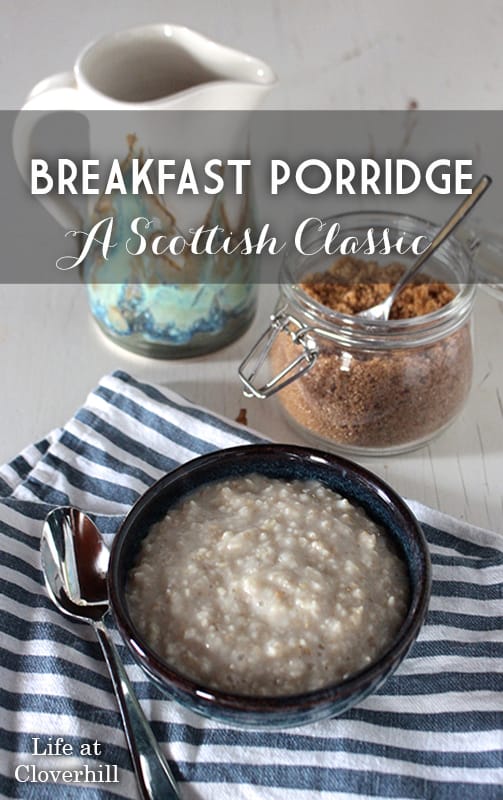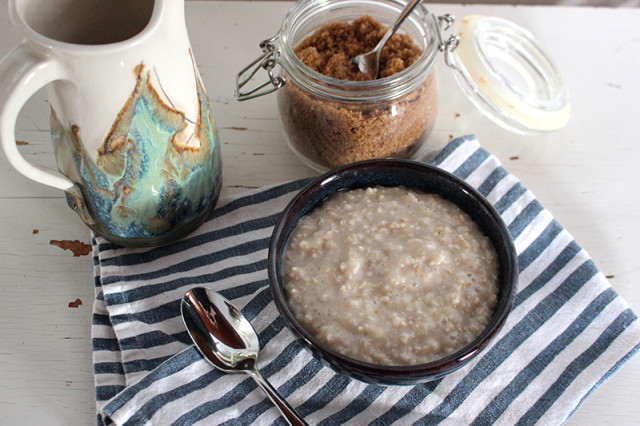
Today, January 25th is the Scottish holiday for Robert Burns Day (or “Robbie Burns Day”) in honour of the famous Scottish poet. Traditionally a dinner is served on the evening of the 25th with haggis, but I thought I’d honour the day with one of my favourite Scottish breakfasts – traditional porridge or “oatmeal”. It’s been a long staple of the Scottish diet and with good reason. Oats are well-suited for the country’s colder temperatures and high humidity, which is also why Scottish immigrants like my ancestors, brought it over to Canada with them. Growing up, my mother would make a huge pot, and serve it up with milk and brown sugar for breakfast, especially in the colder months, and it’s become a tradition in our home now too. A rich, thick and hearty porridge can carry you right through to lunchtime and is a great way to warm up in the morning. Burns mentioned his own love of porridge in his 1786 poem “The Cotter’s Saturday Night”:
But now the supper crowns their simple board,
The halesome parritch, chief o Scotia’s food
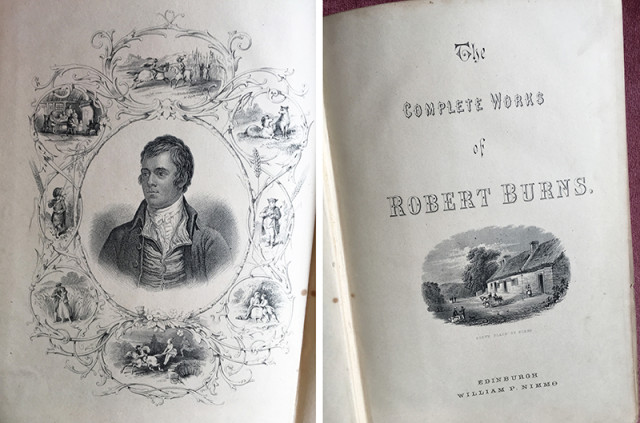
Last spring, when we were helping my great aunt move into her new apartment, I came across a copy of the complete works of Robert Burns from the mid-180ss.
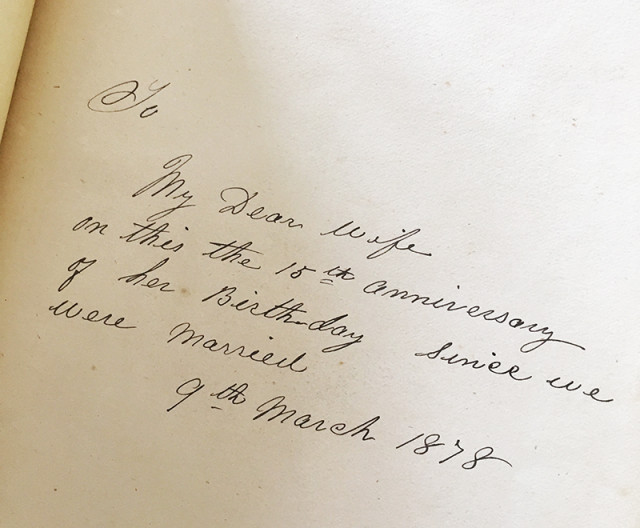
Inside the cover, I found a dedication in lovely penmanship. It was given to my great great great grandmother on her birthday by my great great great grandfather almost 140 years ago. I have Scottish heritage on both sides of my family and love finding little pieces of history like this.
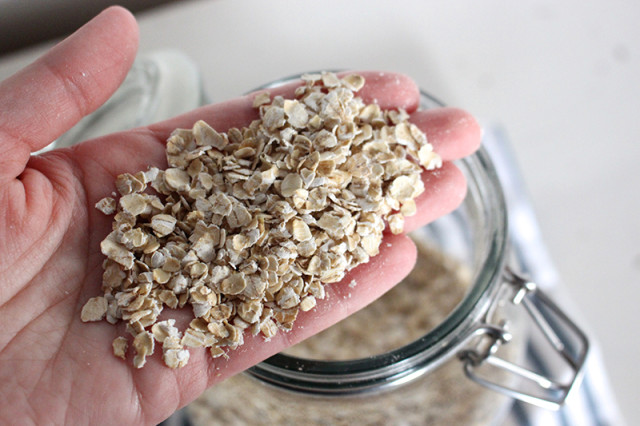
Nutritionally, all oats are the same, but there are some significant differences in cooking time and texture that you’ll want to take into consideration. I prefer to use rolled oats, but you can also use steel-cut oats or instant oats.
Rolled Oats, also called old-fashioned oats, have been steamed and then rolled until they resemble a disc-like shape. Rolled oats cooked faster than steel-cut oats and absorb more liquid. They still retain their shape and have a good texture after cooking.
Steel-cut oats, also called Scottish or Irish oats, are oats that have been cut into several pieces rather than rolled. They take longer to cook but have a chewy texture and retain their rice-like shape even once they’re cooked. For these, you’ll want to do a ratio of 1 cup steel-cut oats to 3-4 cups water, and it will take about 20-30 minutes to slowly cook until they’re a silky creamy texture with a bit of bite.
Instant Oats are like rolled oats but they have been pre-cooked, dried and rolled slightly thinner than rolled oats. They’ll cook quicker than rolled oats or steel cut oats, but they have less texture and can turn mushy.
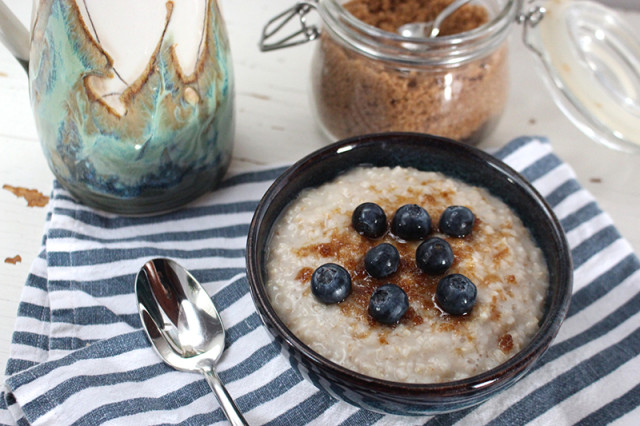
For a truly delicious creamy porridge, you need three key ingredients – good quality oats, salt and time. Giving the oats time to slowly absorb the liquid is what will help produce a great oatmeal, and it will still be ready in under ten minutes. The salt is incredibly important as well. If you’d always thought you didn’t like oatmeal, I urge you to try it again with salt this time. The salt will add so much flavour to the dish and will make any sweet additions you add, like fruit, cream, spices, maple syrup, taste that much sweeter.
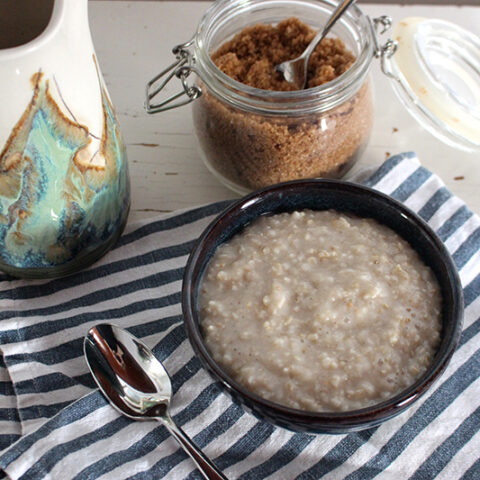
Breakfast Porridge - A Scottish Tradition for Robert Burns Day
Ingredients
- 1 cup rolled oats
- 2 cups water
- ⅛ tsp salt
- optional add-ins: spices, grated apple, raisins, etc.
- optional toppings: milk, cream, sliced fruit, berries, brown sugar, maple syrup, honey, etc.
Instructions
- Add oats, water and salt to a medium-sized pot and bring to a boil. Add additional ingredients such as spices or fruit if you'd like.
- Reduce heat to low-medium and cook for 5-7 minutes, stirring frequently with a wooden spoon to prevent it from sticking to the bottom.
- Serve warm with your favourite toppings.
- Refrigerate for up to one week. To reheat, stir in a splash of milk and microwave until warm.
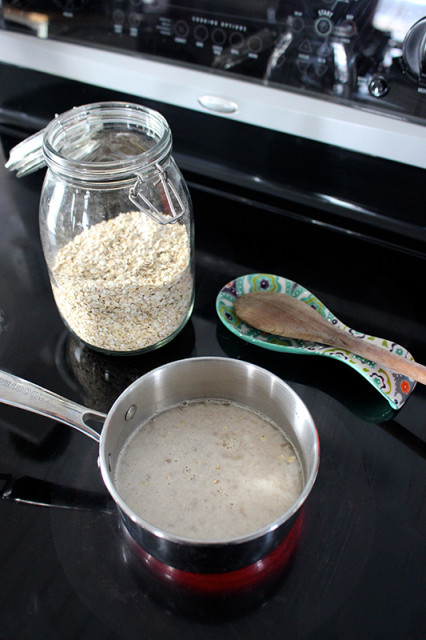
Add oats, water and salt to a medium-sized pot and bring to a boil. Add additional ingredients such as spices or fruit if you’d like.
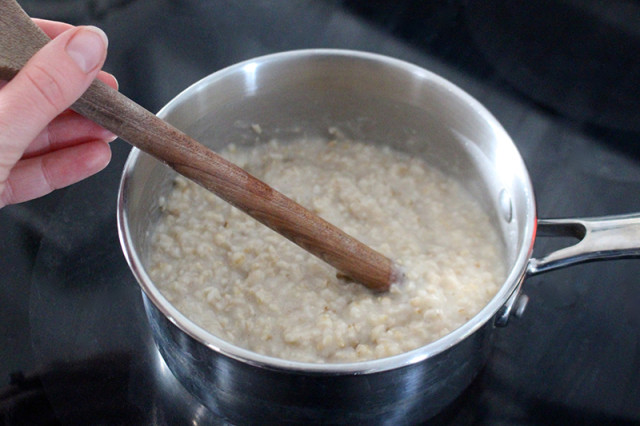
Reduce heat to low-medium and cook for 5-7 minutes, stirring frequently with a wooden spoon to prevent it from sticking to the bottom. In Scotland, they traditionally used a wooden stick called a “spurtle” to stir the porridge and prevent lumps from forming, but you can use the handle of a wooden spoon to achieve similar results.
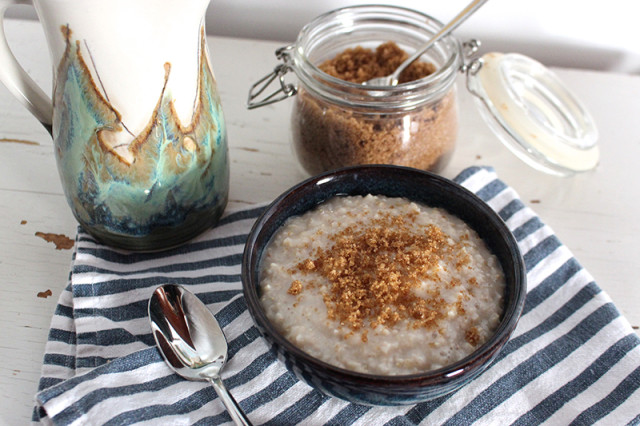
Serve warm with your favourite toppings, such as milk, cream, sliced fruit, berries, maple syrup, honey, brown sugar, etc. There are endless possibilities! You can refrigerate for up to one week, making this a great make-ahead breakfast. Just add a splash of milk before giving it a zap in the microwave.
